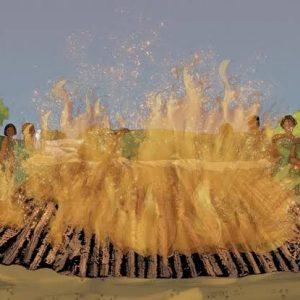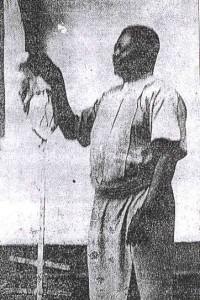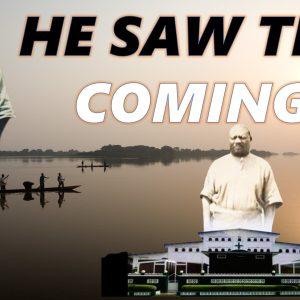As usual, we always talk about the great events that have marked African culture and history, particularly the Democratic Republic of Congo. We are going to find out about the Lunda Empire, one of the greatest pre-colonial Congolese, Angolan and Zambian kingdoms in this part of Congotalks243.
ORIGIN OF THE LUNDA EMPIRE
The Lunda empire was founded in 1600, it was first a chiefdom ruled by a king, the first king was known as Yala Mwaka, his son Mwaka Konde or Kond Tubung or the King of the Bungu gave birth to a daughter Lweji or Rwej who would succeed him in power. Ilunga Tshibinda, brother of Ilunga Kalala, King of the Luba Empire, left his empire because of a war of succession and married Queen Lweji or Rwej of the Lunda Empire, who subsequently bequeathed him power with the sacred bracelet Rukan
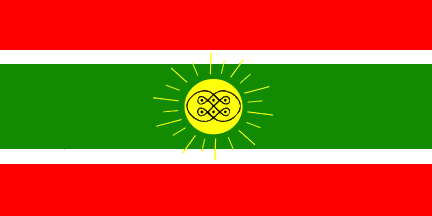
Ilunga Tshibinda was considered the founder of the Lunda empire. He had a child with Rwej who was called Yav and he was called Mwant Yav and all the other kings of the empire bore this name as a royalty title. The story tells that Rwej was sterile, Yav’s biological mother was represented by Swanna Mulunda or Swan Murund.
The Lunda Empire Location
The northwestern part of Zambia, the northeastern part of Angola, and the western part of the actual Katanga in the DRC formed the location of the Lunda empire.
Today these people are still located in the same territories and are called Ruund.

The Lunda Political
The politics of the Lunda Empire was the foundation of its power which was monarchical. The Lunda political system was based on matrilineal succession and perpetual governance i.e. the king had to die to leave power to someone else who would be chosen by a council of notables or dignitaries but also by the respective representatives of each tribe of the Lunda Empire whose capital was Musumba. Additionally, the new kings had to almost become their predecessors.
The title Mwant Yav was given to all the Ruund kings (Lunda Kings) even if they were not necessarily from the same family. It was a must to take on the personality of the Mwant Yav and he ruled with two very important women, Runkokesh, representative of the mother of the Lunda Empire Rwej, but also Swanna Mulunda, who gave birth to the first Mwant Yav.
The Lunda Empire Culture
The Lunda empire culture was varied, the tradition of the Lunda tribes being the union of members of different empires: a Muluba (Luba) Ilunda Tshibinda and a Runnd (Lunda) Rwej. Among the most important ceremonies, we find the Mukand which is a circumcision ceremony or the passage from childhood to adolescence. The Lunda Empire religion is based on the belief in one god Nzamb Katang who was worshiped and represented by a priest called Mulemb to whom offerings were made, currently, they are all Christian. The language of the Lunda empire is Lunda or Ruund, Ki Karunda (today), a language belonging to the Bantu group of languages like Kiluba and Tshiluba of Baluba.
The women were not permitted to talk when men were talking. When a woman was menstruating she was obliged to stay in a hut outside the courtyard until she finished… Men also respected women in a certain way
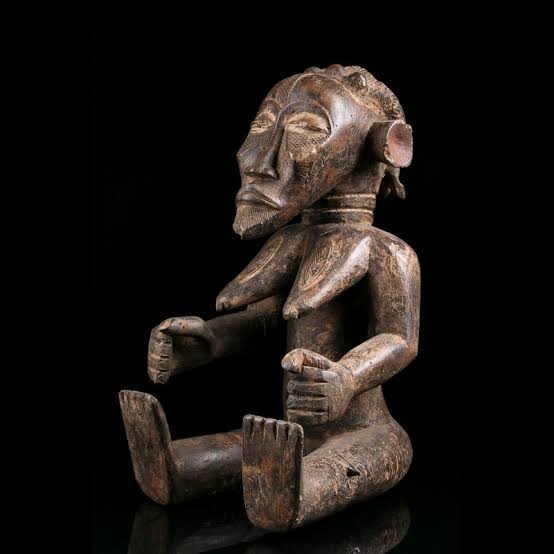
In the Democratic Republic of Congo they are considered brothers with the Baluba, what differentiates them is their names: the Ruund or Lunda tribes have names without vowels at the end: for example, Kakwat, Kawel, Yav, Diur, and with their King who was Luba Ilunga Tshibinda most of them also have names such as Tshibind, Tshibang, Kimbang, Kazad and that is how they are often called the Ruund. The Lunda empire art was from their neighbors Chokwe and Luba.
Economy Of The Lunda Empire
The economy of the Lunda kingdom was based on the trade with other kingdoms. They traded ivory, salt, copper, and slaves up to Lake Muero. The Lunda or Ruund of Katanga now in the province of Lualaba lived from fishing and agriculture.
The Lunda Empire Success
Unlike their Luba neighbors, the stability of their political system had contributed to their success, the Lunda empire had its expansion and its apogee in the 19th century. The empire conquered new lands, subdued other states, and tribes, or at least obliged them to pay tributes. The Runnd or Lunda had the greatest military power. For instance, Mwata Kazembe expanded the kingdom in the Eastern part, near the Luapula river and Ishindi in north-western part.
The Decline Of The Lunda Kingdom
The Lunda Empire came to an end in the 19th century partly because of the Chokwe invasion and partly because of colonization. The Lunda remained in their heartland despite the Chokwe invasion. In 1884 the colonizers divided the Lunda empire into 3 colonies, Zambia by the British, Angola by the Portuguese, and the DRC by the Belgians which at the same time caused the end of several other pre-colonial Congolese kingdoms such as the Luba empire (read all Histories of the Congolese Kingdoms here).
CONCLUSION
The most important thing to remember about the Lunda Empire is that it was a great empire of the DRC, Zambia, and Angola, created in the 16th century by Mwaka. The Lunda Empire was headed by Rwej who bequeathed her power to a man from the Luba empire Ilunga Tshibinda. The empire reached its success in the 17th and 18th centuries through trade, military, and political power, but was invaded by the Chokwe, colonized by the Belgian, Portuguese, and the British in 1884.
Want to know more about the DR Congo in general? We recommend you follow us on your favourite social media platforms: Instagram (@congotalks243 and @yafelie), Twitter (@congotalks243), TikTok (@yafelie and @congotalks243), Facebook (@CongoTalks243) and LinkedIn (@CongoTalks243), and subscribe to our YouTube channel.
✅ How to support our works: PAYPAL: https://paypal.me/CongoTalks243
For business inquiries related to CongoTalks243, you can reach out at info@congotalks243.com.

